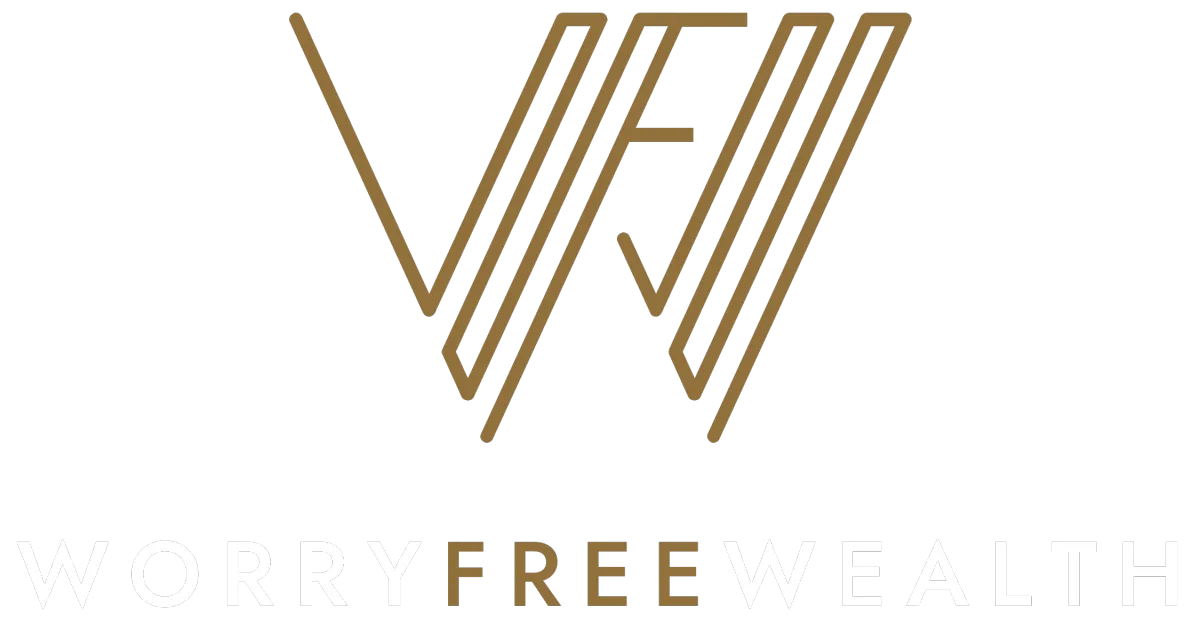BLOG
Latest news, tips and insights for
Worry Free Wealth

Balancing Your Investment Portfolio as a Business Owner: Is It Really Risky?
When I was mentoring a client the other day, we discussed a crucial question: how much risk should you have in your investment portfolio? For most people, this is about finding the right balance between stocks and bonds. But what if you're also an entrepreneur, with a significant portion of your wealth tied up in your business? How does that change your approach to risk?
The Traditional Investment Portfolio
Typically, when building a portfolio, you might start with a balance like 80% stocks and 20% bonds—commonly called an 80/20 portfolio. As you get closer to retirement, that mix might shift to something more conservative, like 60% stocks and 40% bonds. Over time, you gradually adjust to match your risk tolerance.
But as a business owner, you're not just managing stocks and bonds. You have another major asset to consider: your company. Now, you have to think about a three-way split—stocks, bonds, and your business.
The Business Dilemma
For many entrepreneurs, the idea of selling their business is difficult to face. After years of hard work, selling often gets postponed. But if you're approaching retirement, your company may represent a large portion of your net worth. When you meet with a financial planner, they might point out that your portfolio is "risky" due to this concentration of wealth in one asset—your business.
They might even suggest selling part of your company or shifting more of your wealth into safer assets like bonds. But does that mean your business is a risky investment? Not necessarily.
What Makes an Investment Risky?
Let’s get one thing straight: risk comes from not knowing the details, from lacking information, or from not understanding how to value an asset. Just because a lot of your wealth is in one asset doesn't automatically make it risky—especially if that asset is your business and you know it inside out.
Here’s what your financial planner might see:
2% Bonds
12% Stocks
86% Private Company
To them, having 86% of your wealth in one business seems risky. But is it?
The Knowledge Advantage
Here’s how I want you to look at it:
2% Bonds: Insurance against stock market corrections.
12% Stocks: Diversification across various industries and companies.
86% Private Company: You have intimate knowledge of every facet of this business. You know the clients, the operations, the risks, and the opportunities. In short, you’re in control.
Is it a risky asset if you don’t know the business? Absolutely.
But if you’ve spent years building and running your company, it’s not risky in the same way a random stock market investment might be. In fact, many business owners would argue that they wish they could buy shares in other businesses with the same confidence they have in their own.
A Broader View of Your Investment Portfolio
There’s another way to think about your investment portfolio, one that’s particularly useful for younger entrepreneurs. Consider your future earning power—the income you’ll generate before retirement—as part of your overall wealth. Think of this income as an asset sitting in a savings account, waiting to be deployed into stocks, bonds, or other investments.
For example, let’s say you’re 50 years old and make £100,000 a year. You plan to retire at 60, meaning you have another £1 million in earning potential. Now, your portfolio might look like this:
1,5% Bonds
9% Stocks
64,5% Private Company
25% Future Earning Power
This perspective can help younger entrepreneurs take on more risk early in their careers, knowing that they have future income to back them up. And even if you’re mid-career, it suggests you may not need to be as conservative as some traditional financial advice recommends.
Final Thoughts
Owning a business comes with unique risks, but it also offers unique advantages. The key is to understand the difference between informed risk and unnecessary risk. By knowing your business inside and out, you’ve already mitigated much of the risk your financial planner sees on paper.
Remember, it’s not about blindly diversifying just because conventional wisdom says so—it’s about making smart decisions based on the assets you know best.
Wishing you and your business continued success.

